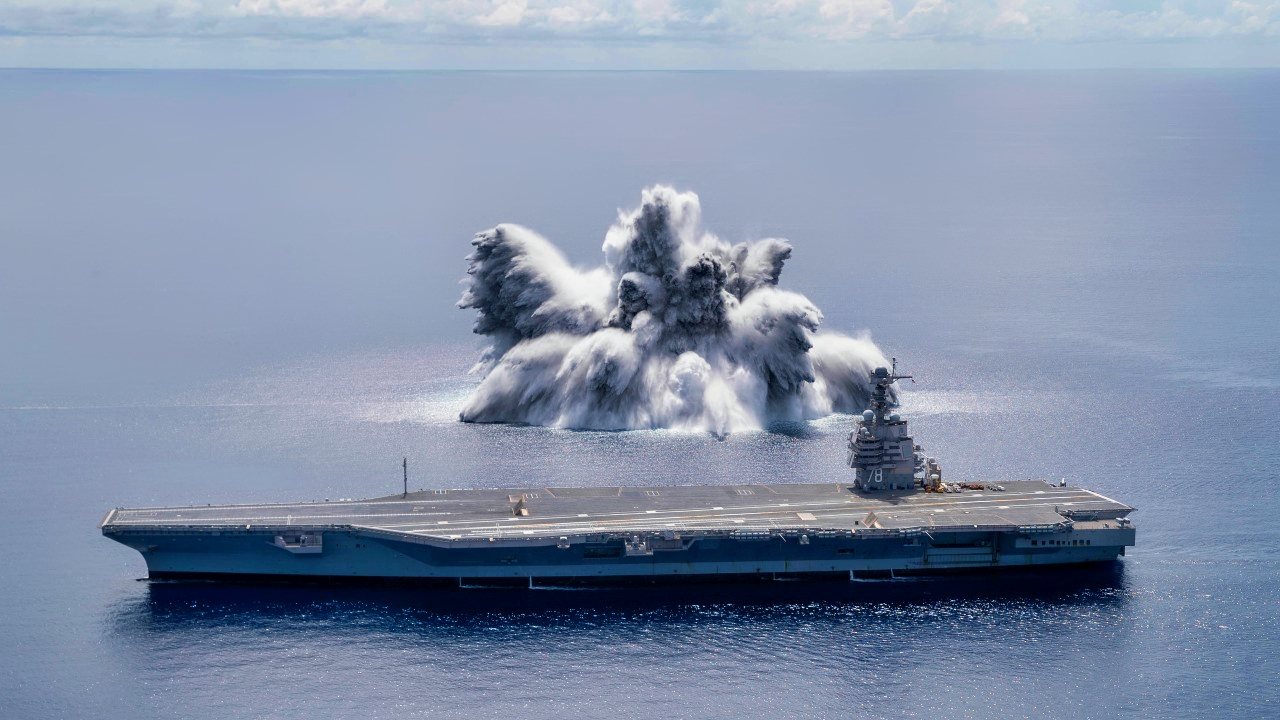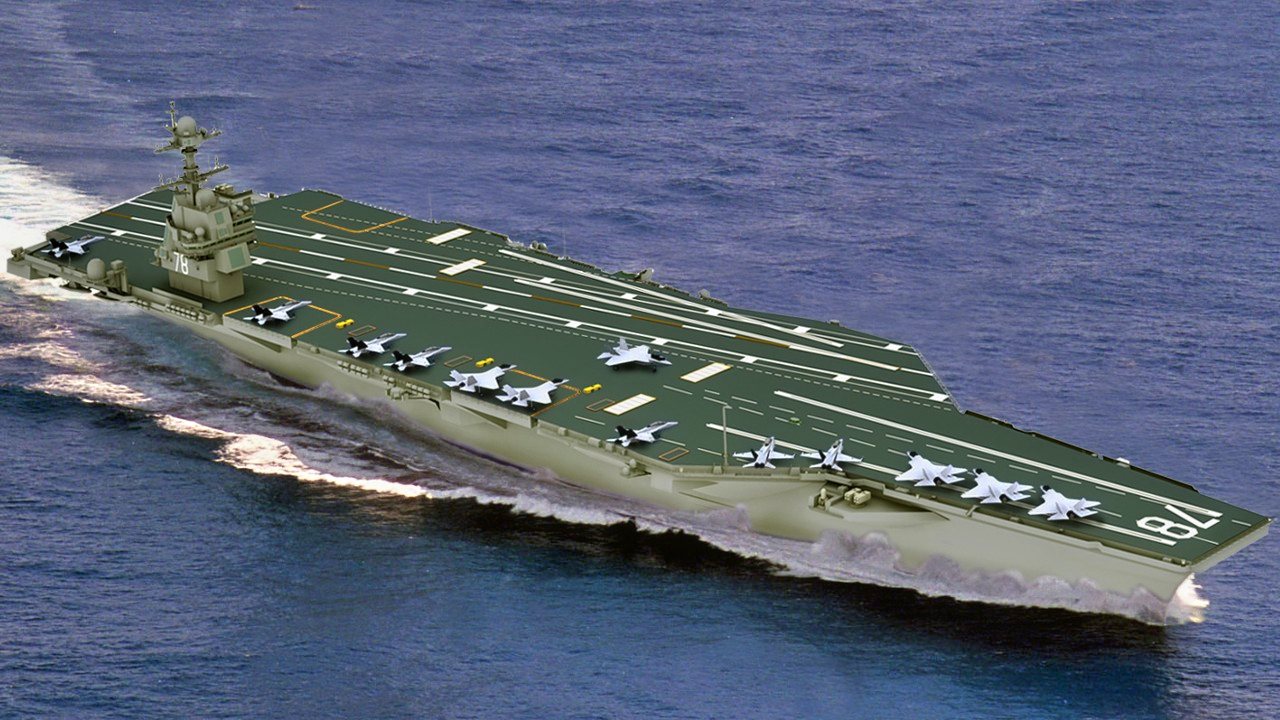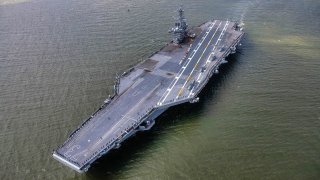Ford-Class: The Navy Aircraft Carriers That are 1 Giant Question Mark
The USS Gerald R. Ford is the most advanced aircraft carrier globally, marking the start of a new class of supercarriers for the U.S. Navy. Its first deployment lasted 239 days, involving significant operations in areas like Israel and the Red Sea, conducting over 10,000 aircraft sorties.
Summary and Key Points: The USS Gerald R. Ford is the most advanced aircraft carrier globally, marking the start of a new class of supercarriers for the U.S. Navy. Its first deployment lasted 239 days, involving significant operations in areas like Israel and the Red Sea, conducting over 10,000 aircraft sorties.

-The carrier boasts advanced technologies like the Electromagnetic Aircraft Launch System (EMALS), Advanced Arresting Gear (AAG), and Advanced Weapons Elevators (AWE), enhancing aircraft turnaround by 30%.
-Despite its $13 billion cost, the Ford-class requires a 20% smaller crew than its predecessors, aiding in the current military recruitment crisis.
USS Gerald R. Ford: A New Era in Aircraft Carrier Technology
The USS Gerald R. Ford is the most advanced aircraft carrier in the world. The U.S. Navy’s latest carrier to enter service, the USS Gerald R. Ford is also the first ship of a whole new class of supercarriers.
In January, the aircraft carrier and its battlegroup completed their first full-length operational deployment, which included presence in operationally “hot” areas around Israel and the Red Sea.
First Deployment Down
In total, the carrier spent 239 days at sea (with three extensions to its deployment because of the Hamas terrorist attacks on Israel and the Houthis strikes against shipping in the Red Sea), conducted 43 replenishments at sea, conducted 10,396 aircraft sorties, and sailed almost 85,000 miles.
“Throughout our time in the Mediterranean, the ship and crew both performed remarkably. Our sailors breathed life into the ship’s advanced technologies to demonstrate the extraordinary capabilities Ford-class carriers will provide to future generations,” Capt. Rick Burgess, the commanding officer of the aircraft carrier, said as the carrier strike group was finishing its deployment.
The flattop carried F/A-18 Super Hornet fighter jets, EA-18G Growler electronic warfare aircraft, MH-60R Seahawk helicopters, E-2D Hawkeye airborne warning aircraft, and C-2A Greyhound transport aircraft.
“At the height of our readiness and proficiency, we were called to the Eastern Med, and proved to be the right ship at the right time to answer our nation’s calling. The Gerald R. Ford is everything our nation hoped it would be, and more,” the carrier’s skipper added.
The USS Gerald R. Ford can pack more than 75 fighter jets, transport aircraft, and helicopters. In terms of performance, the nuclear-powered ship can reach speeds of over 30 nautical knots (about 35 miles per hour) and can operate for 25 years nonstop before its nuclear reactor requires maintenance.
However, all this performance and new technology doesn’t come cheap. The USS Gerald R. Ford cost the American taxpayer $13 billion. Although the cost per ship is expected to fall with the subsequent vessels of the class, the cost will still be hefty.
New Ship, New Technology
The Ford-class aircraft carriers come with 23 new technologies. Undoubtedly, the star is the Electromagnetic Aircraft Launch System (EALS), which can launch aircraft at a faster pace. Some other technological additions the Ford-class brings are the Advanced Arresting Gear (AAG) and Advanced Weapons Elevators (AWE).
Combined together, these three technologies aim for a faster turnaround of aircraft in the range of a 30 percent increase. In a potential conflict with China in the Indo-Pacific, launching and recovering aircraft at rapid rates could be key, considering the potent Anti-Access/Aerial Denial (A2/AD) systems the Chinese military operates.

“The new systems incorporated onto Ford-class ships are designed to deliver greater lethality, survivability and joint interoperability with a 20% smaller crew than a Nimitz-class carrier, paving the way forward for naval aviation,” the Navy has stated about the class’ new technology.
The fact that the Ford-class requires a 20 percent smaller crew than its predecessors is important at a period where the Navy—and indeed the whole military—are suffering from a recruitment crisis.
About the Author
Stavros Atlamazoglou is a seasoned defense journalist specializing in special operations and a Hellenic Army veteran (national service with the 575th Marine Battalion and Army HQ). He holds a BA from Johns Hopkins University and an MA from the Johns Hopkins School of Advanced International Studies (SAIS). His work has been featured in Business Insider, Sandboxx, and SOFREP. Email the author: [email protected].
All images are Creative Commons.


